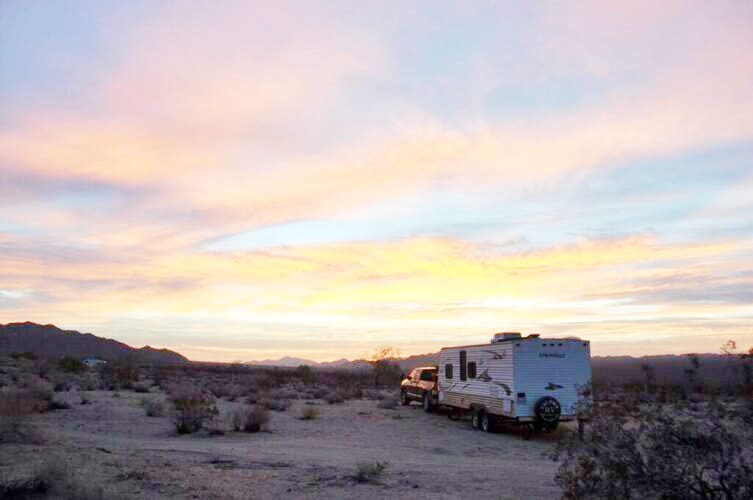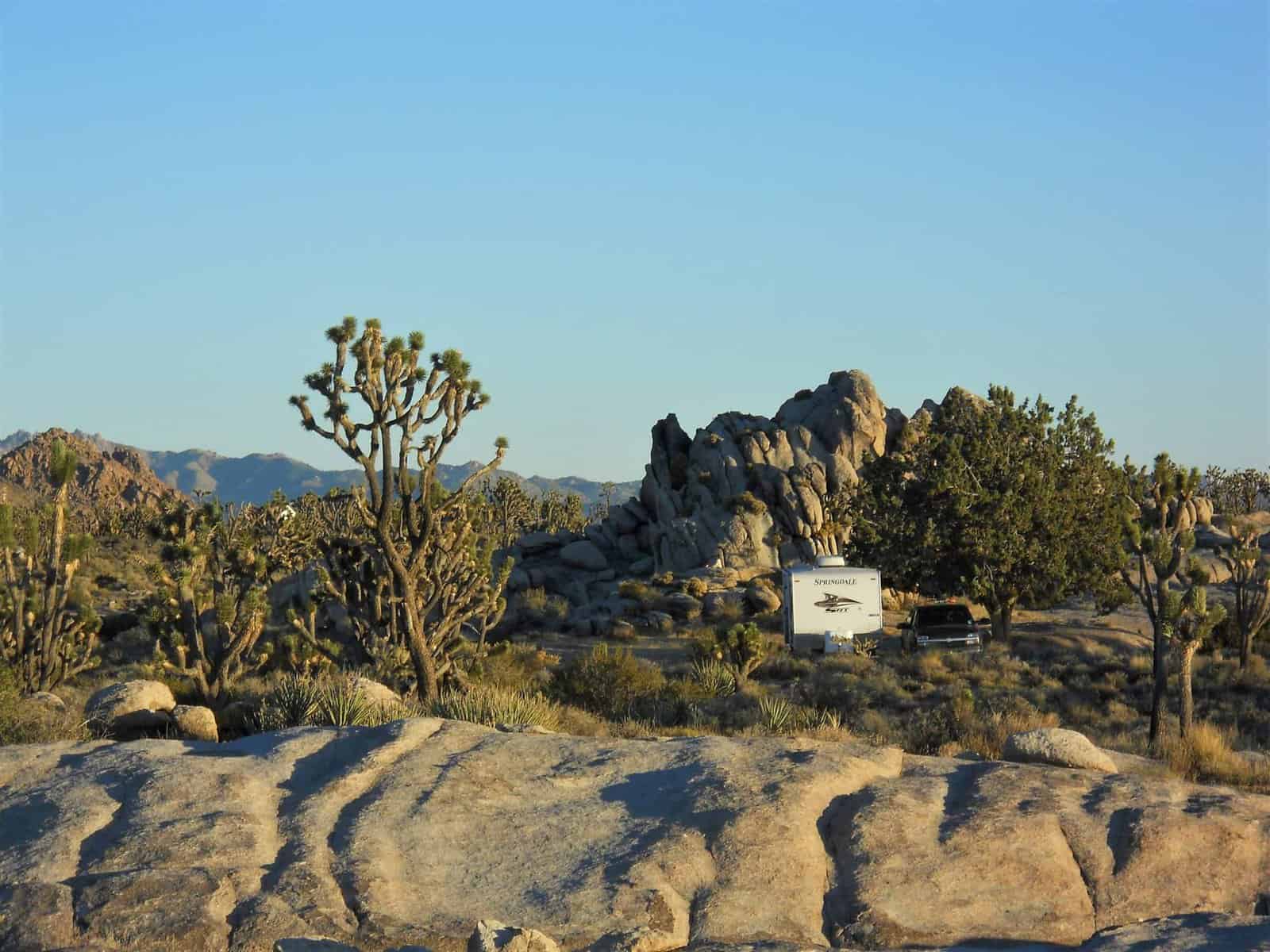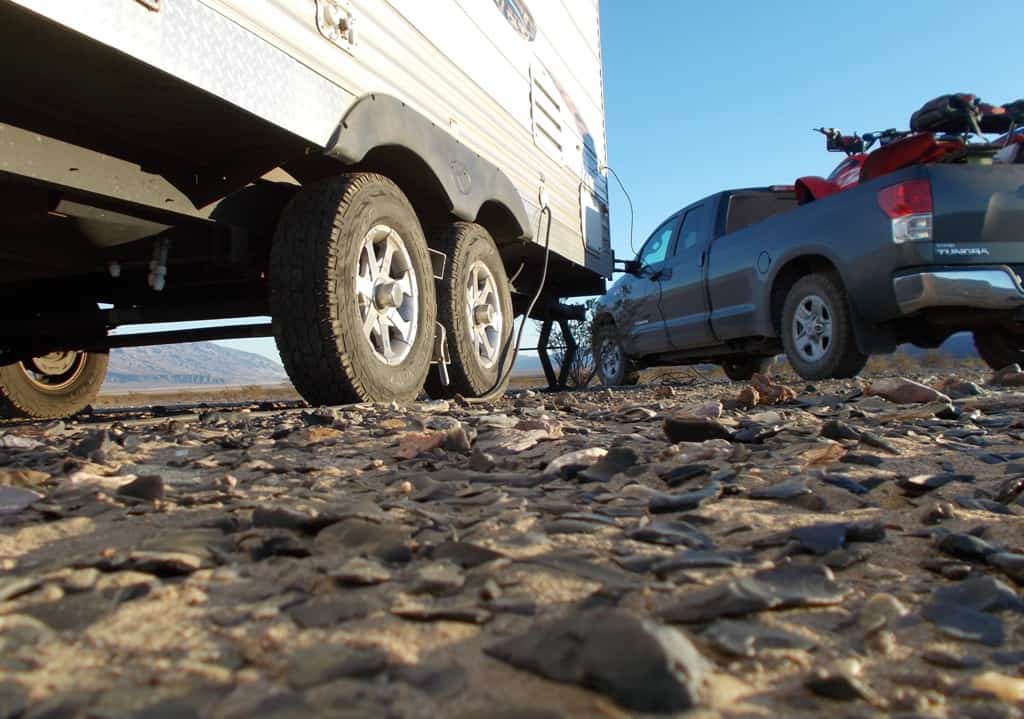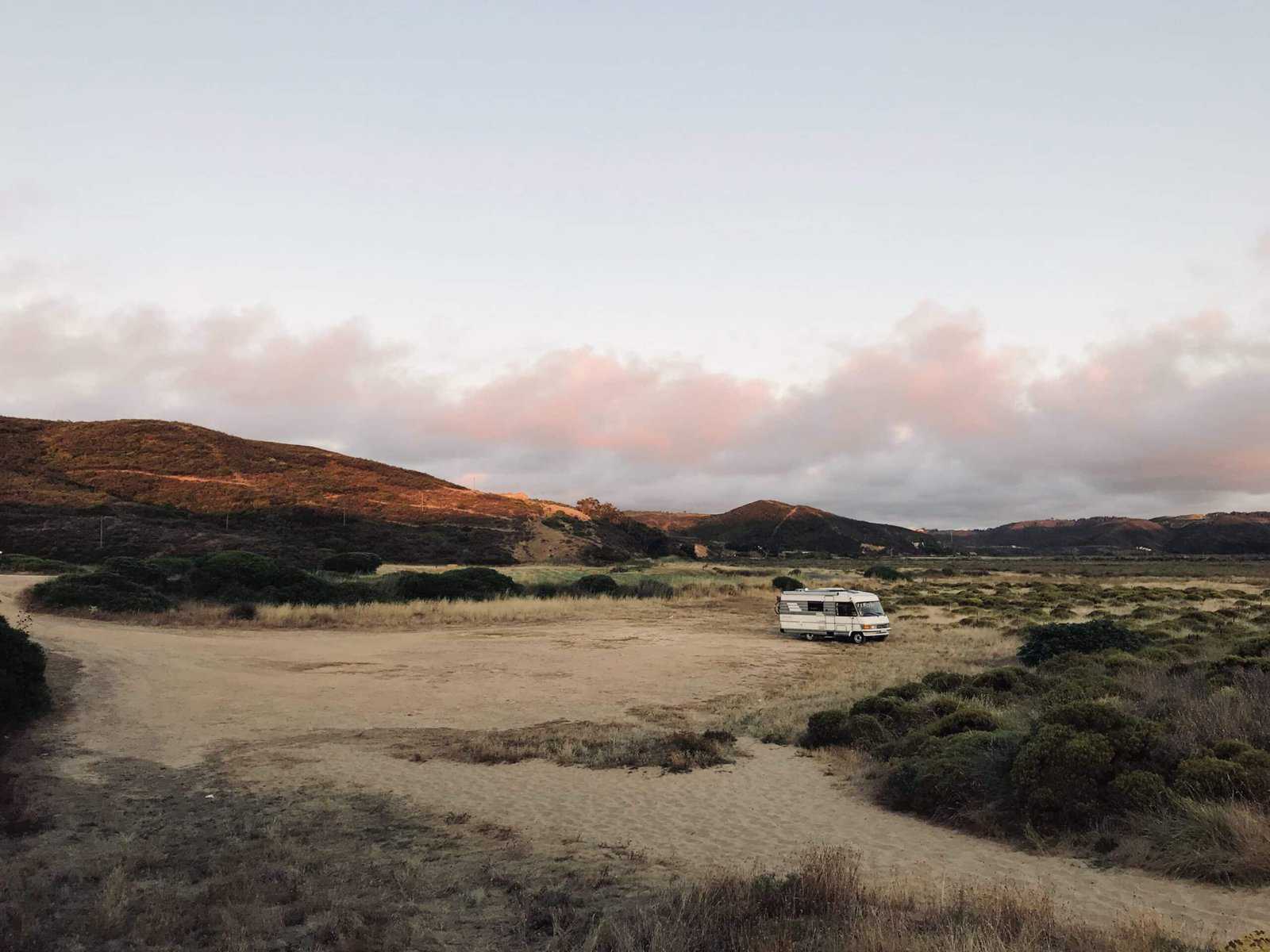National park campground alternatives are a necessity these days if you want to camp in a national park during prime tourist season.
Visitation to America’s National Parks skyrocketed during the pandemic and has yet to let up. Not only are people flocking to the parks, but they are packing the campgrounds within the parks too.
Long gone are the days of showing up in a park and having your choice of vacant spaces to spend your vacation.
Obtaining a reservation for a campsite in national parks is just as difficult, discouraging many RVers from even considering a visit.
However, there is hope for those willing to think outside the box (or more likely outside the park).
11 Great Ideas for National Park Campground Alternatives
There are plenty of national park campground alternatives awaiting those who search them out. If you want to camp in or near a national park, consider one of these 11 other low cost and free camping options.
Boondocking inside national parks
A couple national parks and many national monuments / preserves allow campers to “roadside camp” (dispersed camping, or boondocking) inside national park boundaries. Examples of national park dispersed camping include:
- Death Valley National Park. This destination typically allows roadside camping “along dirt roads at least one mile down the road from the junction with any paved road or “day use only” dirt road.” Other locations require a permit or camping in a designated area. Click here for complete information.
- Big Bend National Park. You’ll find 64 primitive campsites along backcountry roads for those who wish to get away from it all. Some are reservable in advance while others are not. Only a few of the sites will accommodate large RVs. Click here for details.
- National monuments. These locations are operated by the National Park Service. Many offer dispersed camping. Mojave Trails National Monument, Vermilion Cliffs National Monument, Gold Butte National Monument and El Malpais National Monument are some national park boondocking destinations, just to name a few.
- Overflow Areas within national parks. Some national parks and monuments have a working list or staff can tell you about campground alternatives just outside the border of the park. For example, you’ll find two dispersed camping areas outside Joshua Tree National Park listed on the park website. Also, if you ask the rangers at Natural Bridges National Monument you will be directed to an abandoned airstrip near the entrance of the park.

Busy boardwalks at Mud Volcano by Yellowstone National Park is licensed under Public Domain Mark 1.0
Boondocking close to national parks
Many national park campground alternatives with boondocking exist on public land surrounding the parks. This could be on federal or state land. Do an online search using the phrase “dispersed camping near __(name of the national park).”
For example, a search with the phrase “Dispersed Camping Near Mount Rainier National Park” will result in a mix of campgrounds and dispersed campsites near Longmire, Washington, and other small communities surrounding the park. (See Federal Lands listed below for more potential dispersed camping locations on federal public land)
Hipcamp (camping on private land near national parks)
Hipcamp is a growing group of good-natured people and the most comprehensive resource for unique outdoor stays. They work with landowners to offer tent camping, RV sites, cabins, etc. “everywhere from national parks to blueberry farms”. They present opportunities for landowners to earn money hosting campers that love unique natural settings.

For example, if you are planning a visit to Olympic National Park only to find all the campsites in the park are full, try Hipcamp. A quick search leads you to a private farm with boondocking near Olympic National Park, complete with the classic red barn, that has a private spot for an RV.
“Private home-base for your RV on the North Olympic Peninsula. Easy access to Sequim, Olympic Discovery Trail, John Wayne Marina with boat launch, Port Townsend and Port Angeles. Just outside the Olympic National Forest and its trailheads. 35 minutes from Olympic National Park. Great base camp for bicyclists, boaters and backpackers. 7 Cedars Casino, restaurants and markets are short drives away. Seasonal Elk herd sightings and lovely valley view featuring an historic red barn. Two homes nearby, but privacy maintained.”
Val’s Olympic Foothills, Hipcamp campground alternatives near national parks
Private Membership-Based Campgrounds
Keep private membership campgrounds in mind when searching campground alternatives near national parks. My wife and I once camped off-season at a Thousand Trails campground near the entrance to Yosemite National Park even though we were not members. Apparently, many of the camping clubs allow nonmembers to camp off season when demand for campsites from their members is low.

Fairgrounds Camping
Community fairground RV campgrounds are often overlooked as campground alternatives when traditional campsites are booked. Many have designated RV sites for housing workers and vendors during fair time. They are happy to rent these spaces out to RVers during non-fair dates the rest of the year. I have even had success staying at fairgrounds that didn’t offer designated RV sites or advertise overnight camping.
Fraternal Clubs and Organizations
Many fraternal clubs and organizations offer overnight camping / parking to their members. Examples of fraternal clubs with RV camping include the Moose and Eagles. Each requires an invitation to join, so it pays to get to know members. Their clubhouses may or may not be near a national park, but they are worth keeping in mind.
Federal Land
Often there are other federal lands that border national parks where camping is allowed. Examples include the Bureau of Land Management (BLM) and the US Forest Service (USFS). The campsite might be in a lesser known campground, a developed area like a trailhead or boat launch, or an undeveloped boondocking site. Lesser used federal lands with the free and low-cost camping include these spots in the National Wildlife Refuge System (NWRS), Tennessee Valley Authority (TVA) and Bureau of Reclamation (USBR).

State Land with Boondocking
Other campground alternatives that might be near national parks are those on state land. These could be state forest lands, Department of Natural Resources lands, wildlife reserves, fishing access sites, trust lands and others. Examples: Arizona State Trust Lands, Montana Fishing Access Sites, and Washington State Wildlife Areas.
Other potential campground alternatives
- More possibilities available on private land near national parks include: Casinos, Boondockers Welcome, Harvest Host, and big box stores like Cabela’s.
- Camping apps. There are also a host of camping apps that can provide alternatives to traditional campgrounds near national parks. Free camping apps can be a helpful tool but be aware of their shortcomings such as inaccurate information and overcrowded dispersed camping areas.
Hopefully, this short tutorial on campground alternatives shows there are many non-traditional camping options available. Pursuing these may put you and your RV at the doorstep of the national park you want to visit.




